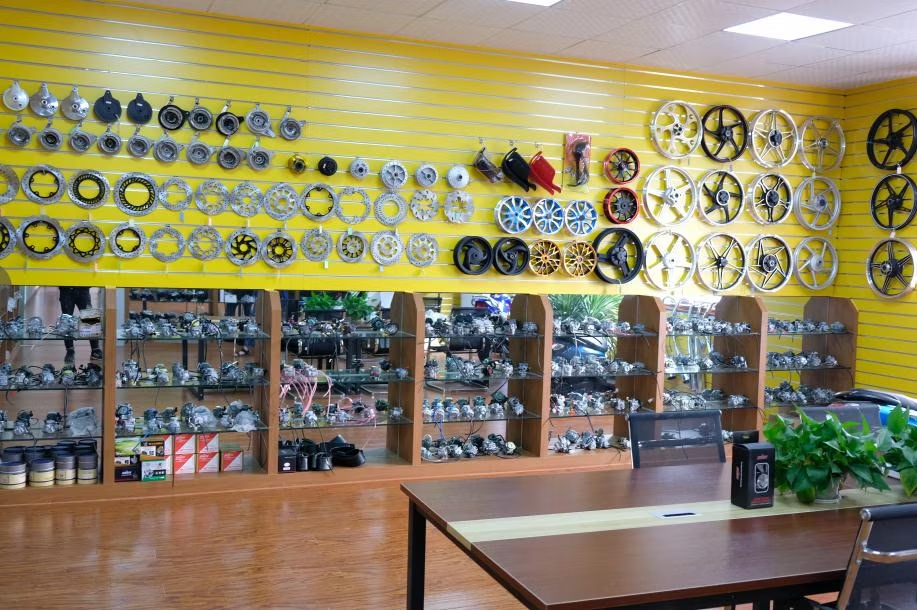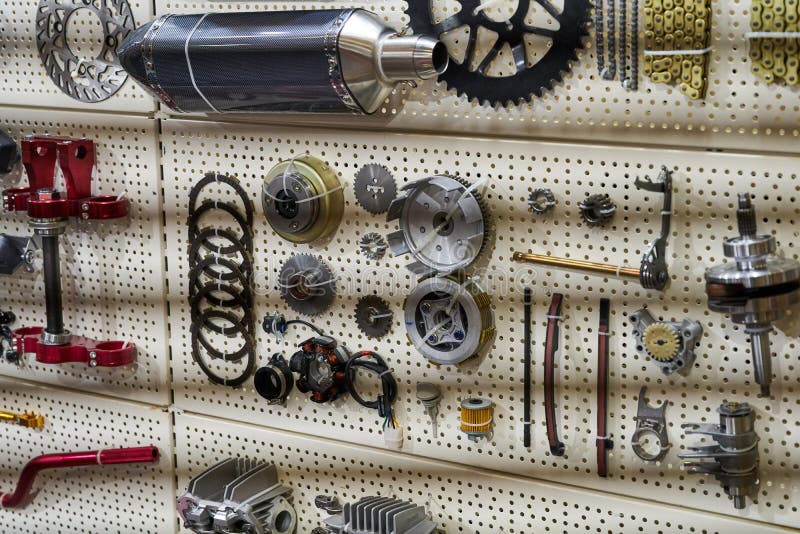Your Best Motorbike Shop for High Quality Parts and Accessories
Your Best Motorbike Shop for High Quality Parts and Accessories
Blog Article
Recognizing the Important Parts of a Motorbike: A Comprehensive Overview for Fanatics
For motorbike fanatics looking to boost their riding experience and guarantee their bikes run efficiently, recognizing the essential components of a motorcycle is critical. Each aspect, from the engine's elaborate functions to the vital duty of the stopping systems, not only impacts performance however likewise security and convenience.
Engine Components

The camshaft plays an essential duty in managing the timing of the engine's shutoffs, guaranteeing the specific opening and closing required for reliable fuel and air intake, along with exhaust expulsion. This timing is vital to keeping optimal engine efficiency and efficiency. Furthermore, the carburetor or gas injection system, depending upon the bike model, is accountable for blending air with fuel in the right proportion for combustion.
The cooling system, either air or liquid-based, functions to keep the engine's temperature within functional limits, stopping overheating and making sure longevity - motorcycle parts nz. Each element, carefully made and integrated, adds to the seamless operation of the engine, defining the bike's power output and overall performance
Transmission System
Important to the motorbike's capability, the transmission system makes certain effective power transfer from the engine to the wheels. This system consists of numerous crucial parts, including the clutch, gearbox, and final drive, each playing an important function in equating the engine's power right into motion. The clutch, commonly run by a hand bar, offers to involve and disengage the engine from the transmission, enabling smooth equipment modifications and regulated acceleration.
The transmission, typically described as the transmission correct, has a collection of equipments that motorcyclists can manually move with to adjust the bike's speed and torque output. These equipments are prepared in a series that allows the motorbike to accelerate smoothly and keep ideal engine performance throughout numerous rates. A lot of motorbikes utilize a consecutive gearbox, calling for the cyclist to move gears in a fixed order.
Braking Mechanisms
While understanding the transmission system is crucial to harnessing a bike's power, just as vital is the capacity to control and stop that power properly, which is where braking devices come right into play. Brakes are crucial for safety and performance, offering the biker with the necessary control to browse different terrains and problems. Normally, motorcycles include two sorts of braking systems: disc brakes and drum brakes.
Disc brakes are much more widespread in contemporary motorbikes because of their exceptional efficiency. They contain a brake disc, caliper, and pads. When turned on, the caliper squeezes the brake pads versus the rotating disc, converting kinetic power right into warm, thereby reducing the wheel. This system offers far better heat dissipation, constant efficiency, and enhanced quiting power, especially in wet conditions.
On the other hand, drum brakes, though much less common, are still located in some motorcycles. They work by pushing brake footwear against the inner surface area of a drum connected to the wheel. While usually less reliable in heat dissipation and stopping power, drum brakes are easier and extra affordable.
Recognizing these stopping systems' subtleties allows bikers to preserve their motorbikes effectively and value the engineering that ensures effective and risk-free quiting.
Suspension and Guiding
Suspension and guiding systems are crucial parts that significantly influence a motorbike's handling and experience comfort. The shock absorber, containing forks at the front and shock absorbers at this article the back, soaks up roadway abnormalities, improving stability and control. Front forks, upside down or typically telescopic, compress and rebound to mitigate impacts, while rear shock absorbers maintain tire contact with the road, important for traction and security.
Steering, centered around the handlebars, attaches the cyclist to the motorbike's directional control. The guiding head bearings make sure smooth operation, enabling accurate maneuverability. Proper placement and maintenance of these bearings are crucial for foreseeable guiding feedback and lowering cyclist exhaustion.
The suspension's here are the findings adjustability is an additional essential aspect; preload, damping, and rebound setups permit personalization to fit different riding designs and conditions. This adaptability is important for maximizing efficiency, whether navigating metropolitan streets or taking on tough trails. Technologies like electronic shock absorber offer real-time changes, improving ride top quality across varied terrains.

Electrical Equipments
After guaranteeing a smooth and regulated adventure through reliable suspension and steering systems, interest transforms to the electrical systems, an essential aspect of modern-day motorbikes. These systems play a crucial function not just in starting the engine however additionally in powering different parts that enhance the performance and safety of the motorbike.
At the heart of a motorcycle's electrical system is the battery, which stores electric power necessary for beginning the engine and powering supporting systems - moto parts nz. The alternator or generator, combined with the rectifier-regulator, makes certain the battery remains billed while the bike is in operation, converting power into electrical power and keeping voltage levels
The ignition system, another critical element, is accountable for firing up the air-fuel blend in the engine's cyndrical tubes. Modern bikes usually use an electronic ignition system, using better efficiency and dependability compared to typical systems.
Lights motorcycle luggage trailer systems, consisting of headlights, tail lights, and signs, are additionally essential, making sure exposure and safety and security for the motorcyclist. Added electronic parts such as sensors, control devices, and presents add to advanced features like gas shot management, anti-lock braking systems (ABS), and digital dashboards, additionally boosting the riding experience.
Final Thought
A detailed understanding of a motorbike's necessary components, consisting of the engine, transmission system, braking mechanisms, suspension, guiding, and electrical systems, is crucial for fanatics intending to optimize safety and security, convenience, and efficiency. Proficiency of these aspects permits informed decisions pertaining to upkeep and upgrades, ultimately enhancing the riding experience. By integrating this understanding, bikers can guarantee their bikes run at peak performance and dependability, therefore making the most of both pleasure and long life of their cars.
For motorcycle fanatics looking to boost their riding experience and ensure their bikes run smoothly, comprehending the important elements of a motorbike is extremely important.Important to the motorcycle's functionality, the transmission system guarantees effective power transfer from the engine to the wheels.While recognizing the transmission system is vital to using a motorcycle's power, just as crucial is the capacity to manage and quit that power effectively, which is where stopping mechanisms come into play. Normally, bikes feature two types of braking systems: disc brakes and drum brakes.
A thorough comprehension of a bike's necessary components, including the engine, transmission system, stopping mechanisms, suspension, guiding, and electrical systems, is vital for enthusiasts intending to maximize safety and security, efficiency, and convenience.
Report this page